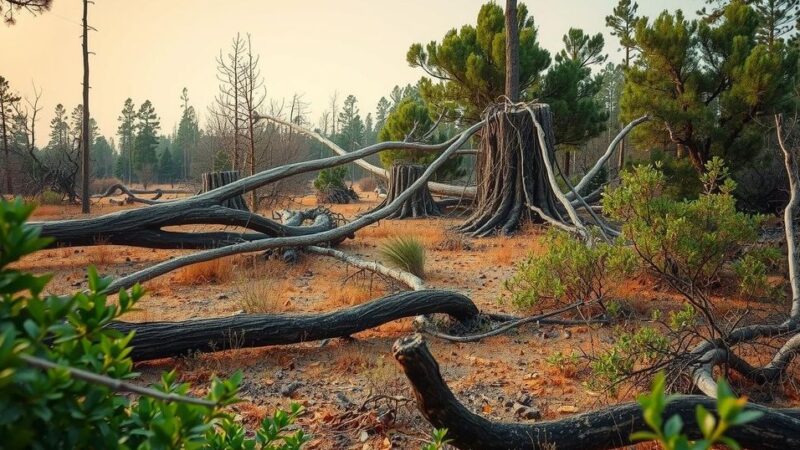A study led by scientists from University College Cork, University of Connecticut, and the Natural History Museum of Vienna elucidates how plants responded to the End-Permian Extinction, the worst climate crisis in Earth’s history. The research highlights the lengthy recovery process of ecosystems and the importance of protecting modern ecosystems in light of current climate challenges.
Recent research conducted by a collaborative team from University College Cork, University of Connecticut, and the Natural History Museum of Vienna has revealed insights into how plants reacted to an ancient climate catastrophe that occurred 250 million years ago. Published in the GSA Bulletin, this study focuses on the recovery process of ecosystems after the “End-Permian Event,” the most severe ecological crisis in the past 500 million years.
The End-Permian Extinction, popularly referred to as the Great Dying, marked a critical period where atmospheric carbon dioxide levels surged five-fold, resulting in a temperature increase of up to 10°C and widespread ecological consequences such as ozone depletion and altered rainfall patterns. According to Professor Chris Fielding, “It is believed to have entailed… widespread wildfires and changes in rainfall patterns across the Earth’s surface.”
The research involved extensive geochemical analyses of sediments from eastern Australia’s Sydney Basin, which allowed scientists to trace the historical impact of the End-Permian event on terrestrial flora. Early colonizers of the post-catastrophe landscape included conifers, which thrived initially but faced challenges during subsequent thermal spikes that lasted approximately 700,000 years. These conditions led to the ascendancy of hardy plants similar to modern clubmosses, signaling a significant ecological shift.
The study highlights that the transition to sustainable forest ecosystems was gradual. Following a significant cooling event known as the “Smithian-Spathian Event,” unique plants termed “seed ferns” began to thrive, eventually establishing stable forests that dominated landscapes for millions of years, especially during the Mesozoic era. Fielding asserts, “The first post-apocalyptic floras were ‘opportunistic’… larger trees and other more complex plant types took considerable time to become established.”
Though forests eventually returned, the resulting plant species differed markedly from those existing prior to the extinction. Chris Mays, from University College Cork, cautions that “the term ‘recovery’ can be misleading… extinction is forever.”
The implications of this research are significant for understanding current environmental challenges. By studying resilience in ancient ecosystems, scientists aim to glean insights on how modern plant life might withstand today’s climate fluctuations. Ph.D. student Marcos Amores emphasizes the importance of plants, declaring that “protecting today’s ecosystems is more important than ever.” The findings underscore the essential role plants play as both stabilizers of climate and as components of food webs.
In conclusion, the extensive timeline of recovery following the End-Permian crisis illustrates that while Earth may indeed recover from drastic environmental changes, such recoveries can extend beyond human timescales. Professor Fielding poignantly remarks, “the protracted and complex path back to ‘normality’… may take periods of time beyond the range of human endurance or even existence.”
The findings from the study regarding the End-Permian Extinction underscore the resilience of plant ecosystems throughout geological history. Key points include the identification of the immediate plant colonizers post-catastrophe, the challenges they faced during extreme climate events, and the evolution of the ecosystems over millions of years. The insights gained promise valuable lessons for contemporary ecosystems as they navigate today’s climate uncertainties.
Original Source: today.uconn.edu






